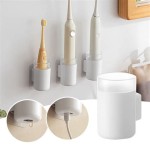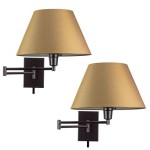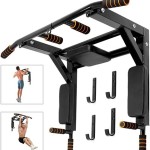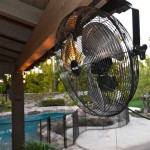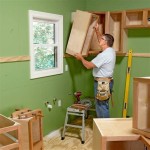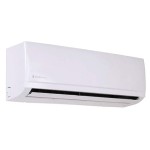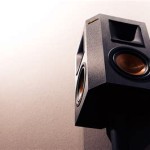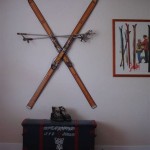What Do I Need to Wall Mount a TV?
Wall mounting a television offers a sleek, space-saving alternative to traditional TV stands. The process, while manageable for many homeowners, requires careful planning and the correct tools and materials to ensure the television is securely and safely mounted. This article details the necessary components and steps involved in successfully wall mounting a TV.
Determining Wall Type and Mount Compatibility
The first critical step involves identifying the type of wall onto which the television will be mounted. Common wall types include drywall (also known as gypsum board), plaster, brick, and concrete. Each wall type requires a specific mounting approach and may necessitate the use of different anchors or fasteners. Drywall, being the most common but also the least structurally sound, usually requires anchoring into wall studs or the use of specialized drywall anchors designed to distribute weight effectively. Brick and concrete walls offer inherent strength but demand the use of masonry drill bits and appropriate concrete anchors. Plaster walls can be particularly challenging due to their fragility and potential for crumbling; therefore, careful consideration and potentially professional assistance are recommended.
Once the wall type is identified, the next consideration is the Video Electronics Standards Association (VESA) compatibility of the television. VESA standards define the hole pattern on the back of the television used for mounting. These patterns are typically measured in millimeters (e.g., 200x200mm, 400x400mm). The mounting bracket that is selected must be VESA compliant with the television. The television's specifications, usually found in the user manual or online, will list the VESA compatibility information. Selecting a mount that does not match the VESA specifications of the television can render the mounting impossible or, worse, unsafe.
Beyond VESA compliance, the weight capacity of the mount is paramount. Ensure that the chosen mount is rated to support the weight of the television, with a safety margin. Exceeding the weight limit of the mount can lead to structural failure and potential damage or injury. The television's weight is also typically found in its specifications. It is always preferable to overestimate the weight capacity to ensure a margin of safety.
Finally, consider the desired viewing angle when selecting a mount. Mounts are generally categorized as fixed, tilting, or full-motion. Fixed mounts position the television close to the wall without any adjustability. Tilting mounts allow for vertical adjustment, reducing glare from overhead lighting. Full-motion mounts offer the greatest flexibility, allowing the television to be extended, swiveled, and tilted for optimal viewing from various positions in the room. The choice depends on viewing preferences and the layout of the room.
Essential Tools and Hardware
Successful television wall mounting necessitates a specific set of tools and hardware. The following is a comprehensive list:
A stud finder is crucial for locating wall studs, especially when mounting on drywall. Stud finders use either electronic sensors or magnetic mechanisms to detect studs behind the drywall. When using an electronic stud finder, calibrate it according to the manufacturer's instructions before attempting to locate studs. Mark the edges of the stud clearly with a pencil.
A level, preferably a bubble level or a laser level, is indispensable for ensuring that the television is mounted perfectly straight. A tilted television can be distracting and aesthetically unappealing. Place the level on the mounting bracket before securing it to the wall to guarantee a level installation.
A drill with various drill bits is required for creating pilot holes and securing the mounting bracket to the wall. The appropriate drill bit size will depend on the type of wall and the anchors being used. For drywall, a smaller drill bit is typically used for pilot holes to prevent the screws from stripping. For brick or concrete, a masonry drill bit is essential. Variable speed drills provide greater control and accuracy.
A screwdriver, either manual or powered, is necessary for tightening screws and bolts. Ensure that the screwdriver bit matches the head of the screws to prevent damage. A powered screwdriver can speed up the process, but it is important to avoid over-tightening the screws, which can strip the threads or damage the wall.
A measuring tape helps accurately measure distances and ensure proper alignment. Use the measuring tape to determine the desired height of the television and to measure the distance between studs. Precise measurements are critical for a professional-looking installation.
Pencils are needed for marking stud locations, drilling points, and other measurements. Use a pencil to clearly mark all relevant points on the wall before starting the installation.
Wall mounting hardware, including screws, anchors, and spacers, is essential for securing the mount to the wall and the television to the mount. The hardware that is included with the mounting bracket may not always be suitable for all wall types or television models. Ensure that the screws are the correct length and diameter for the television's VESA mounting holes. Wall anchors are crucial for distributing the weight of the television when mounting on drywall without studs.
A cable management system, such as cable ties, cable sleeves, or wall plates, helps organize and conceal cables for a cleaner look. Consider running cables through the wall for a truly seamless installation. However, this may require additional tools and expertise.
Safety glasses are vital for protecting the eyes from debris while drilling. Always wear safety glasses to prevent potential eye injuries.
Steps Involved in the Wall Mounting Process
The wall mounting process can be broken down into a series of sequential steps. Prior to commencing, disconnect the television from the power source and remove all connected cables. Protect the television screen with a soft cloth or blanket to prevent scratches during handling.
The first step involves locating the wall studs using a stud finder. Once the stud locations are identified, mark them clearly with a pencil. If mounting on brick or concrete, skip this step and proceed to marking the drilling points based on the mounting bracket's dimensions.
Next, attach the mounting brackets to the back of the television using the appropriate screws and spacers. Ensure that the brackets are securely fastened and that the screws are not over-tightened. Refer to the television's manual for specific instructions on bracket attachment.
Position the wall plate on the wall at the desired height and location. Use a level to ensure that the plate is perfectly straight. Mark the drilling points through the holes in the wall plate. If mounting on drywall, align the wall plate with the previously marked stud locations.
Drill pilot holes at the marked locations. For drywall, use a drill bit slightly smaller than the diameter of the screws. For brick or concrete, use a masonry drill bit of the appropriate size. If using wall anchors, install them according to the manufacturer's instructions.
Secure the wall plate to the wall using the appropriate screws or bolts. Ensure that the plate is firmly attached and that the screws are tightened securely. Double-check the level of the wall plate before proceeding.
Carefully lift the television and attach it to the wall plate. Most mounts have a locking mechanism to secure the television to the plate. Follow the manufacturer's instructions to properly secure the television.
Connect the necessary cables to the television, such as power, HDMI, and audio cables. Use a cable management system to organize and conceal the cables for a cleaner look. Consider using cable ties or cable sleeves to bundle the cables together.
Finally, test the installation by turning on the television and verifying that it is functioning correctly. Adjust the viewing angle if necessary, depending on the type of mount being used. Ensure that all cables are properly connected and that the television is securely mounted to the wall.
Following these steps, with careful attention to detail and adherence to safety precautions, will result in a successful and aesthetically pleasing television wall mounting. If at any point during the process there is uncertainty or discomfort, seek professional assistance to avoid potential damage or injury.

How To Mount A Flat Screen Tv On Wall The Home

How To Mount A Flat Screen Tv On Wall The Home

How To Mount A Flat Screen Tv On Wall The Home

What You Need To Know When Re Mounting A Tv Samsung Newsroom South Africa

Tv Mounting Dos And Don Ts The Plug Hellotech

How To Wall Mount A Tv Led Lcd Abt Electronics Youtube

How To Wall Mount A Tv And Hide The Wires Step By Guide Radio Times

How To Choose The Right Tv Wall Mount For Your And Custom Avi

What Tools Do You Need To Mount A Tv On The Wall

Tv Wall Mounting Service Guide To Diffe Methods Install My Antenna

